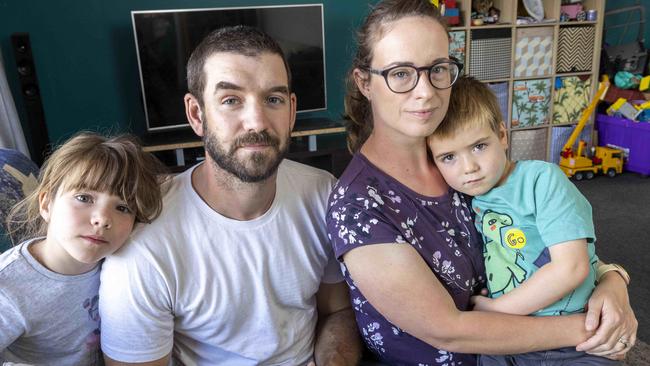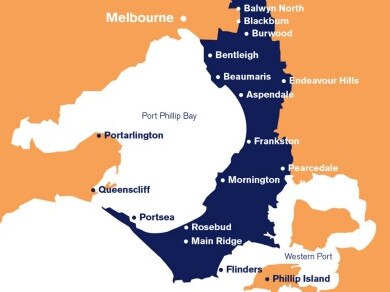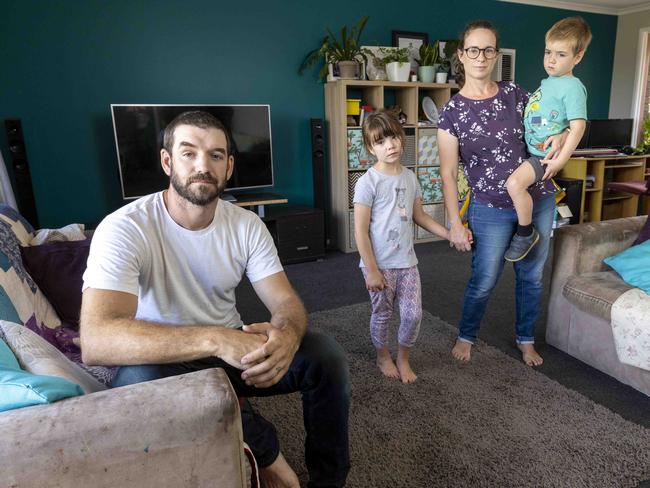Victorian power bill hikes: Full list of how much more each suburb is paying
Power bills for families have shot past $4000 in some areas, with new analysis revealing which suburbs have seen the biggest hikes. SEE THE FULL LIST

Victoria
Don't miss out on the headlines from Victoria. Followed categories will be added to My News.
Combined gas and electricity bills for the average household have soared above $4000 in parts of Victoria.
Families’ budgets are being battered by average bill blowouts of almost $1000 a year in Melbourne’s east and across Gippsland.
Even suburbs with comparatively lower annual increases have been whacked with increases worth an average $870.
The cost-of-living carnage is outlined in a new analysis that tracks the energy deals that nine out of 10 households are on.
Conducted by Alviss Consulting for social services group St Vincent de Paul Society, it shows the actual cost in dollars of recent price rises, with average household gas bills soaring by about $675 – or 45 per cent – this year.
Electricity price rises announced last year weren’t far behind, with a rise of 14-20 per cent, depending on where people live.

Dual-fuel homes in Warrandyte, Ringwood, Chirnside Park and around Mount Dandenong using an average amount of energy now have combined bills worth a staggering $4060, while Gippsland has the worst in the state at a whopping $4095.
Homes in Melbourne’s west and northwest have had the smallest increases – though their total bills still average about $3700.
Vinnies’ policy and research manager Gavin Dufty, said households with gas “should be prepared for a winter bill shock”.
Mr Dufty said Victoria was unique because almost two thirds of homes use gas and were affected by the current price crisis, which recently triggered new Commonwealth caps, and he said there should be more government action to come.
“I call on the state government to have a winter gas support package, similar to the electricity support package they had which provided $250 if you got on to the Victorian Energy Compare website,” he said.
“Urgent support is needed and payments should be delivered during winter to coincide with winter bills, when people switch on their gas heating.
“These increases will be felt at the worst possible time, they will come after rate rises kick in, back to school costs come, and other cost of living pressures.”
Mr Dufty said shopping around for the best possible deal was very important, and that people with concession or health care cards should ensure they are getting a 17.5 per cent winter bill discount.
The Vinnies tariff tracker report shows that switching from the worst competitive contract to the best deal in some parts of Victoria could save up to $675 for electricity, and a whopping $2260 for gas.

It also shows that households with a 3kW solar panel system have bills $715-$940 lower than non-solar customers with the same energy use.
Energy policy has dominated the first months of the Albanese government, which reached agreement with the states in December to impose a $12 per gigajoule wholesale price cap on gas and $125 per tonne on black coal, and has promised the May federal budget will make energy relief a “centrepiece”, particularly for welfare recipients and those on low incomes.
Treasurer Jim Chalmers said the caps were aimed at dampening increases in retail electricity price rises by about 13 per cent and offsetting increased gas prices by 16 per cent this year and that, without the interventions, the average family would be paying $230 more on their electricity bill in 2023.
With Santos and others likening the price intervention move to “Soviet-style policy,” Industry Minister Ed Husic has accused the gas companies of seeking to protect wartime “Putin profits”.

Mr Husic’s office said all major gas, oil and coal companies with operations in Australia had made massive profits during 2022, pointing to figures for BHP (full year at $30.9bn) and Shell (a record global $56bn) to half-year results ExxonMobil ($23.3bn) to Chevron ($17.9bn), Glencore ($12bn) and Santos ($1.2bn).
The Australian Competition and Consumer Commission expects regional gas prices to remain elevated for years at between $20-$30gj, up from between $5-$10, while the International Energy Agency says demand for LNG imports will remain high as Europe shifts from Russian gas, and Chinese and North East Asian demand rises.
Gas, food, mortgage ... it all adds up to anxiety
Frankston couple Josh and Emily Faragher have seen a 20-30 per cent increase in their gas bills.
Living in one of the worst affected parts of Victoria for energy bill increases, it’s not the only spending increase the couple, who have two children, have been hit with.
Along with the gas bills, they’ve also had a 50 per cent rise in the price of groceries and a 50 per cent increase in their mortgage payments.

Ms Faragher said the gas price rise was “the straw that broke the camel’s back”.
“It’s definitely noticeable,” she said.
“It’s enough to say maybe we shouldn’t have the heating up that much. Price of gas, the price of fuel, it all adds to the anxiety.”
They started renovating their house after they bought it two years ago.
The cost-of-living squeeze is affecting their renovation budget.
“The cost means we can’t save money for the renovations, where previously we’ve been able to keep saving and doing projects around the house,” Mr Faragher said.
“We both have good jobs. Essentially we’re going to be fine, but what about the elderly or single parents working two jobs?
“We’ve had to be incredibly frugal. We both need to upgrade our car and we won’t be able to do that for a while.”




